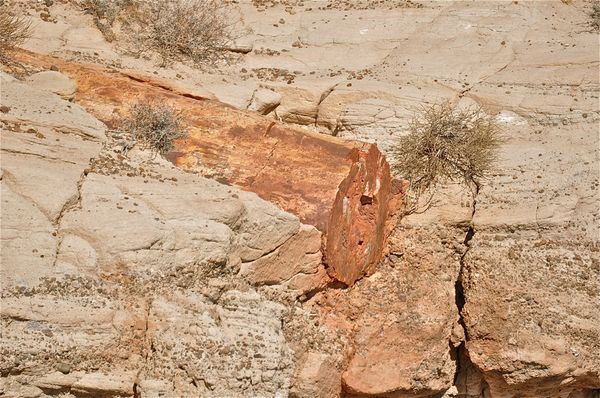Petrified wood, a mesmerizing natural artifact, captures the imagination with its vibrant colors and unique formation process. But have you ever wondered how long it takes to transform a living tree into this geological wonder? The metamorphosis of wood to stone is not merely a swift event; it unfolds over millions of years through an intricate interplay of geological conditions, mineralization, and environmental factors.
To truly appreciate the time frame required for wood to petrify, it is paramount to comprehend the essential processes involved. This transformation primarily occurs through a process known as fossilization, which accepts various forms, including amber and dinosaur bones. However, when it comes to petrified wood, the journey begins with a tree falling or dying and subsequently being buried under sediment such as volcanic ash or mud. This burial is critical as it shields the wood from decay.
The geological timeline for petrification can span anywhere from thousands to millions of years. This variance is primarily dictated by the environmental conditions and the types of minerals available. The concoction of elements such as silica, iron, calcium, and other minerals plays a crucial role in determining the speed and quality of petrification.
Once buried, the wood becomes encased in layers of sediment. Here, the degradation of organic material is halted, allowing the process to commence. Water laden with dissolved minerals permeates through the wood’s cellular structure, gradually replacing organic materials cell by cell. This slow infiltration aligns with the natural processes of erosion and sedimentation. Over time, the cellular composition transforms from an organic state to an inorganic, stone-like state, culminating in the creation of petrified wood.
It is fascinating to note that the composition of the minerals involved significantly influences the resultant coloration and appearance of the petrified wood. Silica-rich minerals, for instance, yield vibrant hues while iron can impart reddish or orange tones. This variational aspect adds another layer of intrigue to the petrified wood, establishing a unique identity for each specimen.
Another pivotal aspect to consider is the environmental setting where the petrification occurs. In high-temperature regions or areas with volcanic activity, petrification can expedite due to rapid mineral deposition. Conversely, in moist environments where organic matter tends to decay swiftly, the process may stagnate. Thus, those interested in the timeline of petrified wood formation must recognize how diverse conditions affect this remarkable transition.
To break it down, the entire process can typically be outlined in several stages, each varying in duration:
- Death and Burial: The initiation stage occurs when a tree falls or dies. Burial under sediment is rapid but varies based on external forces like floods or landslides. This stage may take anywhere from hours to days.
- Mineral Infusion: Following burial, the wood undergoes minuscule changes over thousands to millions of years through mineral infusion, where silica-rich water seeps into the wood’s cellular structure. This primary petrification stage can last from thousands to potentially millions of years, depending on conditions.
- Complete Replacement: Eventually, the original wood structure is replaced cell by cell, leading to a true petrified state. This final transformation may take millions of years, emphasizing the extensive timeline of petrification.
As one can glean, the long stretch of time involved in forming petrified wood adds to its allure. When holding a piece of petrified wood, one is not merely observing a remnant of a former tree; one is grasping a piece of history attesting to millions of years of geological evolution.
Furthermore, it is essential to consider the broader implications of fossilized wood within ecosystems. While petrified wood provides geological insight, it also contributes invaluable data to the understanding of ancient climates, environments, and biological interactions. This interplay between the past and present underscores the importance of preserving these natural relics for scientific research and public appreciation.
To put it succinctly, the timeline for petrified wood formation is staggering. It encapsulates a universe of vibrant life, sudden cataclysm, and an elongated process of transformation that mirrors the ceaseless movement of geological forces. Now, as you ponder the time it takes to contrive petrified wood, consider your connection to the natural world. Do you appreciate the timeless narrative encapsulated within these ancient artifacts? Will you seek out opportunities to engage with petrified wood, understanding the journey it undertook before reaching your hands?
This contemplation leads to a challenge: delve into the world of petrified wood. Seek out specimens, educate yourself about different geological formations, and explore their environmental implications. Understanding how nature evolves over eons can enrich your appreciation for our planet’s history and the stories encased in rock.
In conclusion, the journey from living tree to petrified wood is an extraordinary narrative of time and transformation. Embrace this challenge and journey through the ages. You may find a profound appreciation for the natural world and a deeper understanding of the processes that shape our environment in ways you never imagined.

